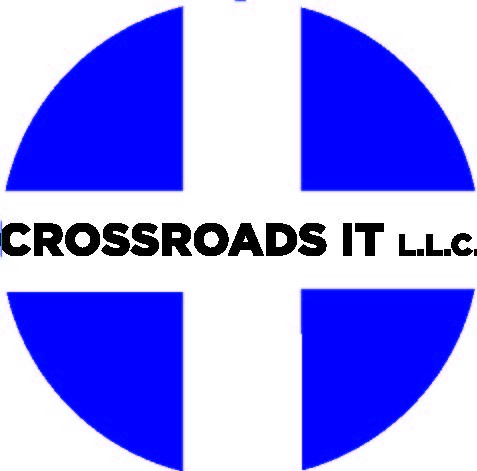
Call 585.729.4321 or Contact Us for more information.
__________________
Disaster Recovery
Taking the assertive approach to securing your information isn’t difficult or even costly. Knowing how information gets exposed, how to protect yourself, and some guidelines can be very helpful. Trying to recover from having your information exposed however, that is both nearly impossible and can be wildly expensive. Having a disaster recovery plan in place should the worst happen is very important.
Over the next few blogs, we’ll discuss some easy ways to take care of your company and keep things where they should be. We’ll cover a range of topics:
- Network Security
- Email Best Practices
- File Storage
- Disaster Planning & Recovery
- HIPAA Standards
Planning & Recovery
You’ve taken all the precautions and you thought the system was locked down tight. Then someone opened the wrong attachment, or some email got through the filters and tricked a trusting employee… however you got here, now there’s chaos. Things are missing, maybe there’s some sort of ransomware happening. At a minimum, you need to recover back to the basics. A week ago, everything was cool. What do you do?
Preventative measures are the best way to avoid what we’re going to talk about next, and prevention is still more important than how you respond to such a situation because you can avoid the situation as a whole. With that said, what happens when the world is on fire? How to you get back to baseline, get systems online, restart productivity, and skip only the smallest of beats for you customers? Easy: You plan for the worst situation imaginable and be strangely thankful when you’re falling short of that cataclysm.
Planning Takes Insight
Before we can plan for the worst, we have to conceptualize the worst. It’s unpleasant for the squeamish, but you have to understand what you’re dealing with before you can do just that.
Of everything that can go wrong, there’s basically two main branches of failures that can be reasonably planned for: Physical and Digital.
Physical Disaster Planning
The good news is that disaster recovery is relatively simple from physical problems. The bad news is that you would have had to go through a flood, fire, building deconstruction, theft… all the delightful things you (hopefully) have insurance for. Data recovery is still a challenge. After all, it’s easier to do when a hard drive isn’t in cinders. From a risk standpoint, physical disasters are statistically less likely than digital. From a recovery standpoint, the tangible limits of how much stress an item can endure is the concern. That said, you can get a replacement server/computer/phone.
Why is recovery simple? Foresight. As annoying and unfortunate as it is, things fail. Hard drives stop spinning, computers stop working, and the world goes round. The inevitability of this can lead to some very simple planning to ensure your company isn’t completely tied to the physical. Cloud backups are the first thing that come to mind.
Computers are just the vessel by which you consume information. In the same way you can get a new phone and still keep your number, with the right foresight, computers can be swapped at a minimal disruption.
Digital Disaster Planning
Your digital world is ironically a different solution wrapped in the same problem. Successful recovery takes a completely different form.
Digitally, we’re discussing assets in the form of information. Intellectual property and intangible documents and the first thoughts. However, depending on your business, personal information such as electronic health records and identification information can also be at risk.
Online (cloud) storage, frequent backups, hard drive imaging are great ways to plan for a loss. Keeping files off-site is a great way to make sure you don’t lose them to a local problem.
Redundancy. Redundancy. Redundancy.
Most reputable cloud storage companies have various storage facilities scattered across multiple locations. Virtually all of them keep your data in one location, and a verbatim copy in a completely different location should a natural disaster hit.
For example, Salesforce keeps 21 server-locations in North America alone. That redundancy is key to making sure your data has a 99.99% availability rate, which is the expected standard of any cloud-based company, at a minimum. Employing some sort of off-site backup and storage service should be a serious consideration for any company and it doesn’t have to come at a massive cost.
Windows Thought Ahead… Generally.
Windows 10 (and in a much less successful way, Windows 7) has a great feature allowing users to keep progressive backups of their files and store them someplace on or off the system. Specific folders that you’re using consistently can be configured to keep a running update. Every time you change a file, the same changes are made to the backups every so often. This is great for files, but what if you have a specific system configuration?
Fear not, Windows also can take a system image of your hard drive, allowing you to restore a completely identical version of one hard drive to another. Imaging is a good way to keep a clone of your system on file, at the small cost of space and time. Say something happens to the hard drive in your computer right now, if you had Windows make an image, you could apply it to a new hard drive. The result is a complete restoration of your files and Windows as a whole when the image was made. The down side is that you will lose whatever changes you made between the last image and now.
Cost of Disaster Recovery
Protection from a disaster isn’t needlessly complex. There’s things to think out, contingencies you can plan, and a relative expectation of service you can give out to your clients in the even something goes wrong. You want to take steps to ensure it can happen, but getting back in business quickly is very possible. I mentioned before about the cost being relatively low.
Physically, hard drives are laughably cheap now. Installation and recovery should only cost you 1-2 hundred for a single machine, and any reputable company would charge on a scale for multiple machines. Hardware overall can be considered relatively inexpensive now.
Digitally, storage is also very cheap. Google Drive is free for the first 15GB. Carbonite has a monthly fee, but they have a great reputation in the industry and Crossroads IT has clients who swear by them*. In fact, we have clients who use both at the same time. If you’re not sold on The Cloud, then offsite can look like an external hard drive. It can look like a VPN with some sort of storage on the other end someplace. Point is, there are options.
Some of these methods work better, depending on the size of a company and the risk it’s incurring. That said, a company who can reassure their clients that data is safe sounds much better than one who says nothing. Especially in the age of ransomware.
The Experience of Restoration
Of course, just having your data backed up is only half the battle. You also need to have framework on how to actually restore this data quickly and cleanly. Experience matters, but forethought can save the day. For example, do you know how long it takes to restore a hard drive image? Should you wipe the drive first? Is there a specific order by which an organization’s machines should be restored? Crossroads IT is able to size it up and formulate a plan.
That plan could be the difference between being down one night, and being down for two weeks. From being able to provide your clients and customers with constant service, or telling them that you’re not getting your email for next few days. That plan is the cornerstone of explaining to your customers what to expect from your business at its lowest point.
If you don’t have a path forward to disaster recovery, it becomes painfully obvious very quickly. That sense of confidence you normally instill in your customers starts to erode. It’s a completely avoidable end and there’s no reason to suffer through it.
Preparation is key.
_________________________________________
*We do not endorse Google Drive or Carbonite specifically. Just examples. However, Crossroads IT does leverage the hell out of Google Drive.
Copyright © 2018-2021- Crossroads IT, L.L.C.
